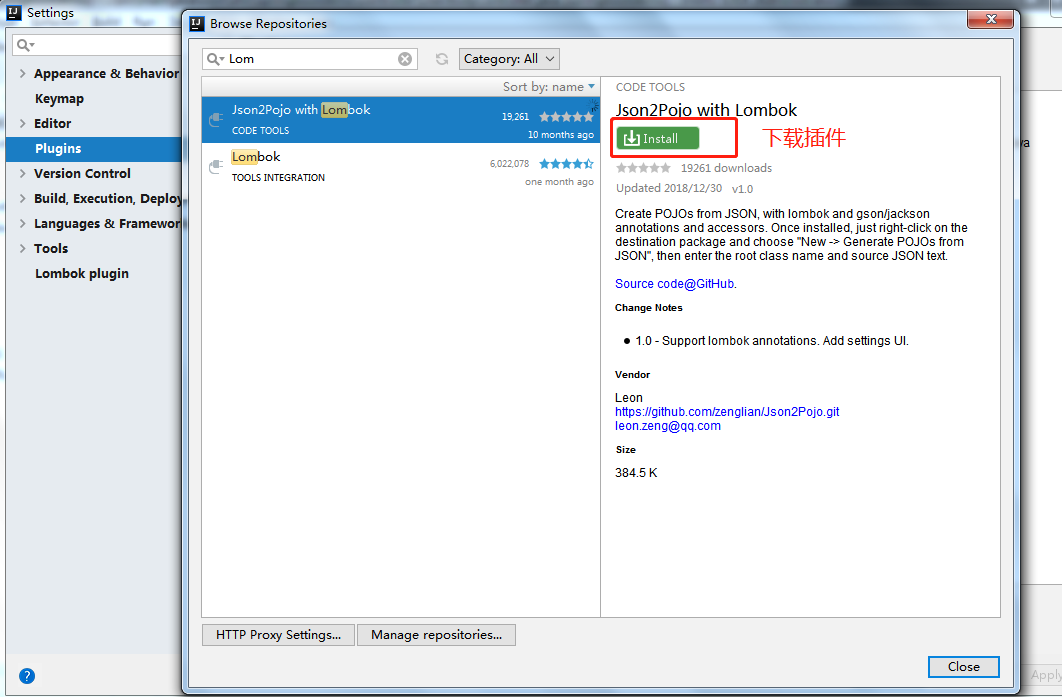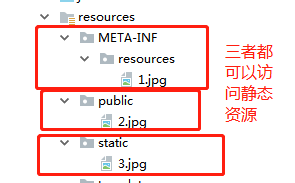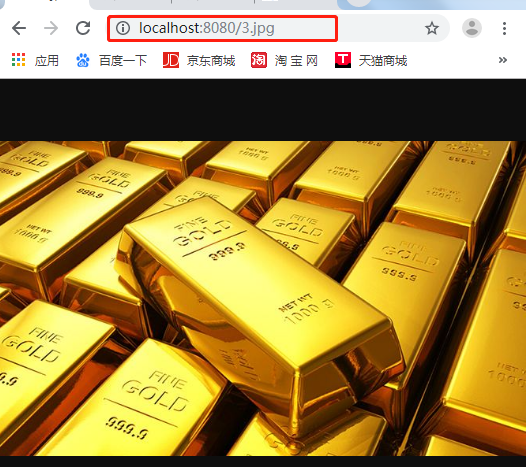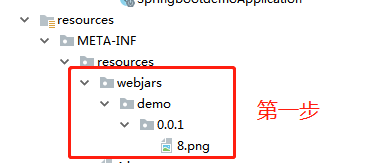1.SpringBoot json支持
Lombok使用:
1、导入依赖库
<dependency>
groupId>org.projectlombok</groupId>
artifactId>lombok</artifactId>
version>1.18.6</version>
</dependency>
2、安装插件


3、在实体bean使用
@AllArgsConstructor //所有参数的有参数构造函数
package com.wf.po; import lombok.AllArgsConstructor; import lombok.Data; import lombok.NoArgsConstructor; @Data //get 、set toString @AllArgsConstructor //所有参数的有参数构造函数 @NoArgsConstructor //无参数构造函数 public class Car { private Integer id; private String name; private Float price; @JsonFormat(pattern="yyyy-MM-dd HH:mm:ss",timezone="GMT+8") private Date createdate; } 4.创建Controller CarController
package com.wf.controller; import com.wf.po.Car; import org.springframework.cache.CacheManager; import org.springframework.stereotype.Controller; import org.springframework.web.bind.annotation.RequestMapping; import org.springframework.web.bind.annotation.ResponseBody; import org.springframework.web.bind.annotation.RestController; import java.util.ArrayList; import java.util.List; @RestController @RequestMapping("/car") public class CarController { @RequestMapping("/findone") public Car findOneCar(){ Car car = new Car(1, "toyo", 1999.99F,new Date(),"13567890001"); return car; } } 说明:
@requestBody注解常用来处理content-type不是默认的application/x-www-form-urlcoded编码的内容,比如说:application/json或者是application/xml等。
一般情况下来说常用其来处理application/json类型
@PathVariable
代码应用:
(1)修改Controller CarController新增接收参数,返回单个对象方法
package com.wf.springbootdemo.controller;import com.wf.springbootdemo.po.Car;import org.springframework.web.bind.annotation.*;import java.util.Date;@RestController@RequestMapping("/car")public class CarController { @RequestMapping("/findOne") public Car Demo1(){ Car car=new Car(1,"小奔驰",1000,new Date()); return car; }// http://localhost:8080/car/findTwo/kkk?id=10 @RequestMapping("/findTwo/{name}") public Car Demo2(@RequestParam(name = "id") Integer id, @PathVariable(name = "name") String name){ Car car=new Car(); car.setId(id); car.setName(name); car.setPrice(1999); car.setCreatedate(new Date()); return car; }// @PathVariable占位符 @RequestParam问号后面的参数//http://localhost:8080/car/findThree/10?name=%E5%A4%A7%E5%AE%9D%E9%A9%AC @RequestMapping("/findThree/{id}") public Car Demo3(@PathVariable(name = "id") Integer id, @RequestParam(name = "name") String name){ Car car=new Car(); car.setId(id); car.setName(name); car.setPrice(1999); car.setCreatedate(new Date()); return car; }} 测试传递参数获取单个对象json
请求地址:
http://localhost:8080/car/findTwo/kkk?id=10或
http://localhost:8080/car/findThree/10?name=%E5%A4%A7%E5%AE%9D%E9%A9%AC(注意那么后面的不是乱码,是汉字转换成utf-8后的效果)utf-8编码转换器https://utf8.supfree.net/
classpath:/static
classpath:/public
classpath:/resources
classpath:/META-INF/resources


(2)、自定义静态资源访问
第一种方式:
1、配置类
package com.wf.springbootdemo.config; import org.springframework.context.annotation.Configuration; import org.springframework.web.servlet.config.annotation.ResourceHandlerRegistry; import org.springframework.web.servlet.config.annotation.WebMvcConfigurer; //自定义配置类 @Configuration public class WebMvcConfig implements WebMvcConfigurer { @Override public void addResourceHandlers(ResourceHandlerRegistry registry) { //将某个磁盘下的资源映射到浏览器上 registry.addResourceHandler("/myPhoto/**").addResourceLocations("file:E:\\springboot\\pic\\"); } } 访问的时候使用此路径:http://localhost:8080/myPhoto/1.jpg
效果图演示:

第二种方式:
首先,我们配置application.properties
web.upload-path=E:/springboot/pic spring.mvc.static-path-pattern=/** spring.resources.static-locations=classpath:/META-INF/resources/, classpath:/public/,classpath:/static/,file:${web.upload-path} 注意: web.upload-path:这个属于自定义的属性,指定了一个路径,注意要以/结尾; spring.mvc.static-path-pattern=/**:表示所有的访问都经过静态资源路径; spring.resources.static-locations:在这里配置静态资源路径,前面说了这里的配置是覆盖默认配置,所以需要将默认的也加上否则static、public等这些路径将不能被当作静态资源路径,在这个最末尾的file:${web.upload-path}之所有要加file:是因为指定的是一个具体的硬盘路径,其他的使用classpath指的是系统环境变量。 例如,在D:/springboot/pic/中有一张8.png图片
1.4、WebJars
WebJars实践:
1、在src/main/resouces路径下创建META-INF/resources/webjars/demo/0.0.1目录,同时为了演示效果,拷贝一个图片到此目录下。

编写一个简单的html页面,放在在src/main/resources/static下(当然也可以直接放在webjar下了,只需要后面加个映射关系即可),内容如下
<!DOCTYPE html> <html lang="en"> <head> <meta charset="UTF-8"> <title>访问静态资源</title> </head> <body> <!--webjars/demo/0.0.1/8.png此路径对应刚才创建的路径--> <img src="webjars/demo/0.0.1/8.png" alt="映射地址"> </body> </html>
3、编写配置类,添加一个资源映射关系.其实也可以不写,因为第4节也有说过,springboot默认的四个资源路径里面就包含了/META-INF/resources/了
package com.wf.springbootdemo.config; import org.springframework.context.annotation.Configuration; import org.springframework.web.servlet.config.annotation.ResourceHandlerRegistry; import org.springframework.web.servlet.config.annotation.WebMvcConfigurer; //自定义配置类 @Configuration public class WebMvcConfig implements WebMvcConfigurer { @Override public void addResourceHandlers(ResourceHandlerRegistry registry) { //配置映射关系(后边的路径和前边的路径拼接即为对应的资源文件路径) registry.addResourceHandler("/webjars/**").addResourceLocations("classpath:/META-INF/resources/webjars/"); } } 4.访问对应的html即可

来源:博客园
作者:互联网蜜蜂
链接:https://www.cnblogs.com/wufeng6/p/11795927.html